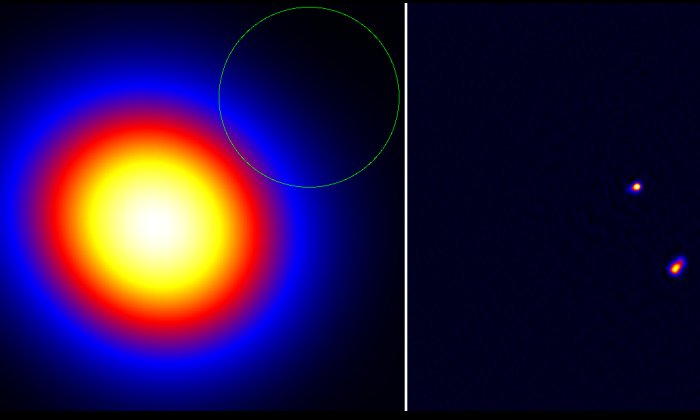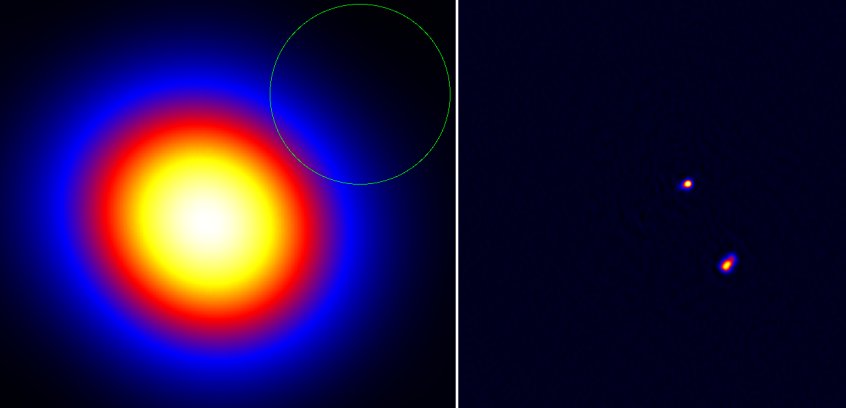Eddie Gonzales Jr. – MessageToEagle.com – The International LOFAR Telescope – a network of radio telescopes across Europe – has taken its first ‘pictures’, revealing a black hole called quasar 3C196 located in a distant galaxy
A close up of the quasar 3C196. Both images show the exact same patch of sky around the quasar. On the left is the image taken by the Dutch LOFAR telescopes; the image on the right was taken by the combined multi-national LOFAR telescopes which together provide a resolution as fine as 0.2 arcseconds, close to 1/10000 of the diameter of the moon. The two bright spots show the locations where two jets from the massive black hole in the centre of the galaxy are hitting other material in the galaxy.
The image of the black hole, called quasar 3C196, also demonstrates the huge field of view that LOFAR captures in a single image: an area of sky equivalent to a thousand full moons.
LOFAR’s network of radio telescopes is designed to study the sky at unprecedented resolution, using the lowest radio frequencies accessible from the surface of the Earth. The UK LOFAR station, located at STFC’s Chilbolton Observatory, is the western-most telescope in the network, and its addition creates a total array almost 1000 km wide, making LOFAR the largest telescope in the world. The addition of Chilbolton also makes LOFAR’s images three times sharper.
“LOFAR allows us to see smaller and fainter objects in the sky, which will help us to answer fundamental questions about cosmology and astrophysics, such as when did the first galaxies form. Here in Edinburgh we are very excited about using LOFAR to study galaxies and quasars in the early Universe,” Dr Philip Best, a Reader at the University’s Institute for Astronomy, is Deputy LOFAR-UK leader. He said.
The new image was created by combining signals from LOFAR radio telescopes in the Netherlands, France, Germany, and the UK, using the LOFAR BlueGene/P supercomputer in the Netherlands. The connection between the Chilbolton telescope and the supercomputer requires an internet speed of 10 gigabits per second – over 1000 faster than the typical home broadband speeds.
Professor Rob Fender, LOFAR-UK Leader from the University of Southampton, said “Getting that connection working without a hitch was a great feat requiring close collaboration between STFC, industry, universities around the country and our international colleagues.”
LOFAR was designed and built by ASTRON in the Netherlands and is currently being extended across Europe. As well as deep cosmology, LOFAR will be used to monitor the Sun’s activity, study planets, and understand more about lightning and geomagnetic storms. LOFAR will also contribute to UK and European preparations for the planned global next generation radio telescope, the Square Kilometre Array (SKA).
Written by Eddie Gonzales Jr. – MessageToEagle.com Staff








